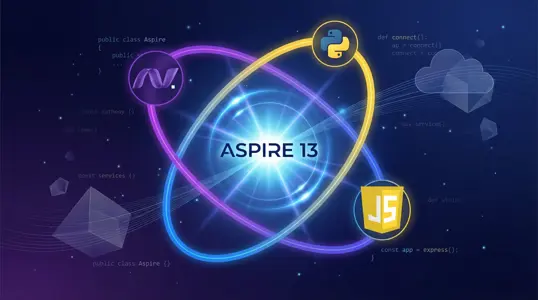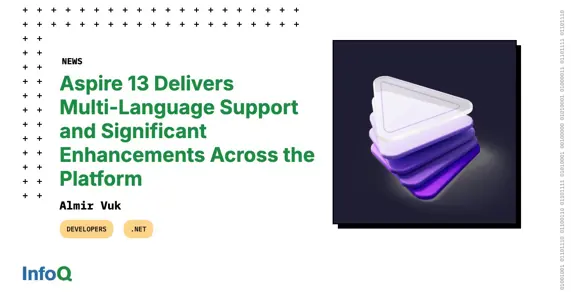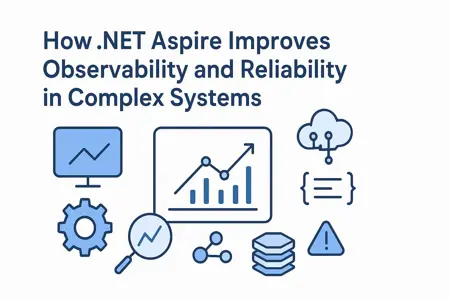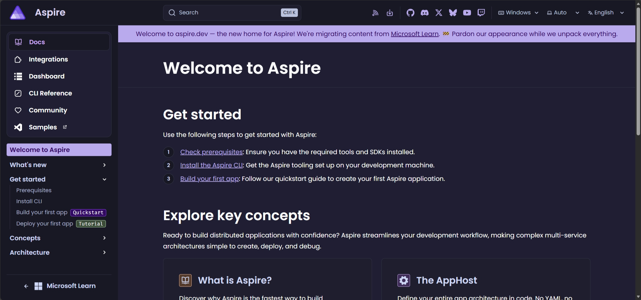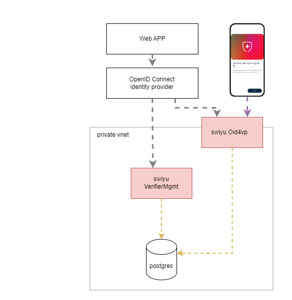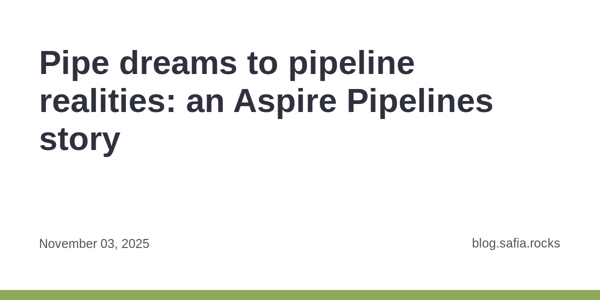.NET Aspire Blog Posts
Aspire 13: Unlocking Polyglot Development
Aspire 13 revolutionizes development with polyglot support for .NET, Python, and JavaScript.
Aspire 13 Delivers Multi-Language Support and Significant Enhancements Across the Platform
Aspire 13 has been released as a major milestone in the platform's evolution. As reported by the team, Aspire is no longer branded as “.NET Aspire” and is now positioned as a full polyglot application platform. According to the announcement, version 13 brings first-class support for Python and JavaScript alongside existing .NET capabilities, marking a significant shift forward.
How .NET Aspire Improves Observability and Reliability in Complex Systems - Blog about Microsoft .NET world
Discover how .NET Aspire improves observability and reliability in complex distributed systems through integrated monitoring, structured logging, and end-to-end tracing, and learn why QA and DevOps teams benefit most from its unified approach.
Migrating from Microsoft Learn to aspire.dev
Productivity exemplified: How I planned, prompted, and tamed AI to migrate aspire.dev.
Aspire 13 bolsters Python, JavaScript support
Microsoft has released Aspire 13, the latest version of the company’s tool kit for building distributed, cloud-native applications. With Aspire 13, Python and JavaScript become “first-class citizens” of the development platform, Microsoft said, with comprehensive support for running, debugging, and deploying applications written in these languages.
Microsoft Releases Aspire 13, Dropping the .NET Part -- Visual Studio Magazine
Microsoft released Aspire 13 at .NET Conf 2025, adding AI integration through the Model Context Protocol and introducing the “Aspireify anything” concept to bring any app into its distributed development framework. The update also adds new pipeline automation, expanded JavaScript and Python support, and a redesigned developer experience.
Implement MFA using swiyu, the Swiss E-ID with Duende IdentityServer, ASP.NET Core Identity and .NET Aspire
The post shows how to use the Swiss Digital identity and trust infrastructure, (swiyu) as an MFA method in an ASP.NET Core web application using ASP.NET Core Identity and Duende IdentityServer.
Microsoft steers Aspire to a polyglot future
Microsoft’s cloud-native, distributed application development tool kit drops .NET from its name and embraces, well, everything.
What Is .NET Aspire? Simplifying Cloud-Native Development for Modern .NET Applications
In this article, we’ll explore what .NET Aspire is, its core features, and how it fits into broader modernization and scalability strategies for organizations already invested in .NET.
Pipe dreams to pipeline realities: an Aspire Pipelines story
The behind-the-scenes chronicles of building Aspire’s pipelines feature: from basic callbacks and progress reporting to a full-on concurrent pipeline concept.
